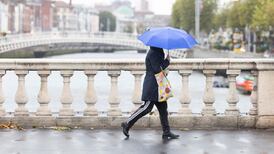A tree can make a sadly modest pile of timber when you see it sawn up for the stove. The ash we were so fond of yielded a couple of generous coffinsful, now stacked at the back of the woodshed to season for a year.
This was the tree outside our living-room window, its seedling planted perhaps a little close those 25 years ago. A gale from the sea would swing a branch to eavesdrop on Channel 4 News, and the budburst in April filled the window with a ravishing, light-filled, lemony green, the very essence of spring. In summer it shaded the corners of the greenhouse into an unintended fernery, but in winter it showed off its muscles, a bulge at every mossy fork to take the strain of the wind. Ethna, who had brought it home from Cong Forest and watched its transient evening birdlife, mourned its passing like that of a friend.
Its offence was against progress and technology – what else? The mast at our gable catches a wireless broadband signal, beamed from Inishbofin, and bounces it out to our neighbours. As the canopy of the ash intruded too far on the electronic sky, it had to be lopped by a tree surgeon. Full of sympathy, he severed the branches at points where the pollarding would weave, eventually, a lower green umbrella.
Felled and skeletal
Down in the acre’s spinney, out of our sight, whole trees were felled at the same time, partly in apology for obstructing everyone’s emails but also because they were ready as timber for the stove. We lived for a winter with the amputated ash outside the window, then surrendered the whole tree to the chainsaw, along with the sycamores, alder and others already felled and skeletal in the spinney.
Everybody with a bit of land to spare, said Ambrose, our estimable surgeon from Foxford, should plant some trees for their old age.
The woodshed now piled to the brim, we have a new, sunny clearing in the spinney where a self-sown thicket of dame’s violet has bloomed to scent the air. The nettles, too, are thriving in sunlight, and should bring back the brighter butterflies grown scarce in the shade of the acre. For nettlebeds to be of use to the glorious peacocks and small tortoiseshells they need to be in full sun from 11am to 3pm between April to August. This gives the butterflies the energy they need to lay their large clumps of eggs on the leaves.
I have that on advice from Bob Aldwell, late of the Geological Survey of Ireland and now free to pursue his lifelong lepidopteral passion. With Frank Smyth he has just published The Butterflies of Donegal, part funded by the county council and an eloquent, colourful treasure at €12.50.
His fieldwork this spring showed just how unusual its weather was – will there now be any other kind? – especially in the northwest. Each month was colder than the 30-year average, and the lack of sun and the polar wind chill in May and early June made conditions even more unfavourable for butterflies. North Donegal, indeed, had the wettest May in 120 years. The effects were all too clear on June 13th, when Aldwell led the annual field day for Donegal’s butterfly-watchers, stalking the open dunes and heaths of the Sheskinmore Nature Reserve, near Ardara.
Its mosaic of habitats make it Donegal’s best butterfly site, but the 30-odd searchers paced five kilometres or so without seeing a single one. Then, arriving at the old Mass house, they saw no fewer than 10 species flying in the hillside’s sunny shelter. Among them were 30 marsh fritillaries, the county’s particular pride. Retreating to a hot spot, spreading out when things get better: this is, apparently, how butterflies survive.
Tough little species
Here in south Mayo I had to wait until June 10th for a first speckled wood, the one reliable butterfly on our increasingly shadowy acre. In southern Britain just lately this tough little species is almost spanning the year, with early sightings in February and late ones in December. Bob Aldwell’s coauthor Frank Smyth had 26 speckled woods on April 21st at Howth’s cliff walk in Co Dublin, which shows what a bit of warmth and shelter can do. (Look for such records at
[ butterflyireland.comOpens in new window ]
).
The speckled wood, Pararge aegeria, is not the most glamorous of butterflies – petite and dark brown, with cream spots on its wings, well designed for the dappled light of woodland edge. My drawing hints at the ceaseless aerobatics that keep it flickering through the shadows, in spiralling territorial skirmishes and mating games.
It exemplifies what one researcher calls “elaborate non-contact aerial interactions in which success is determined by relative persistence” – a persistence that, as the summer wears on, can begin to tire the human eye.










